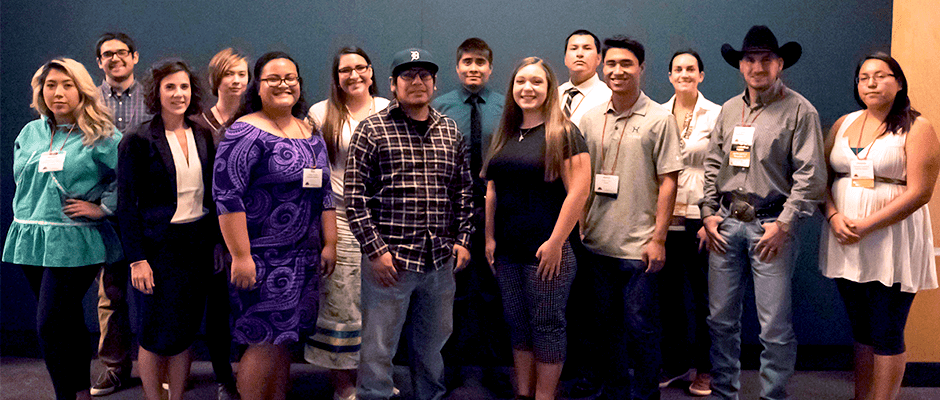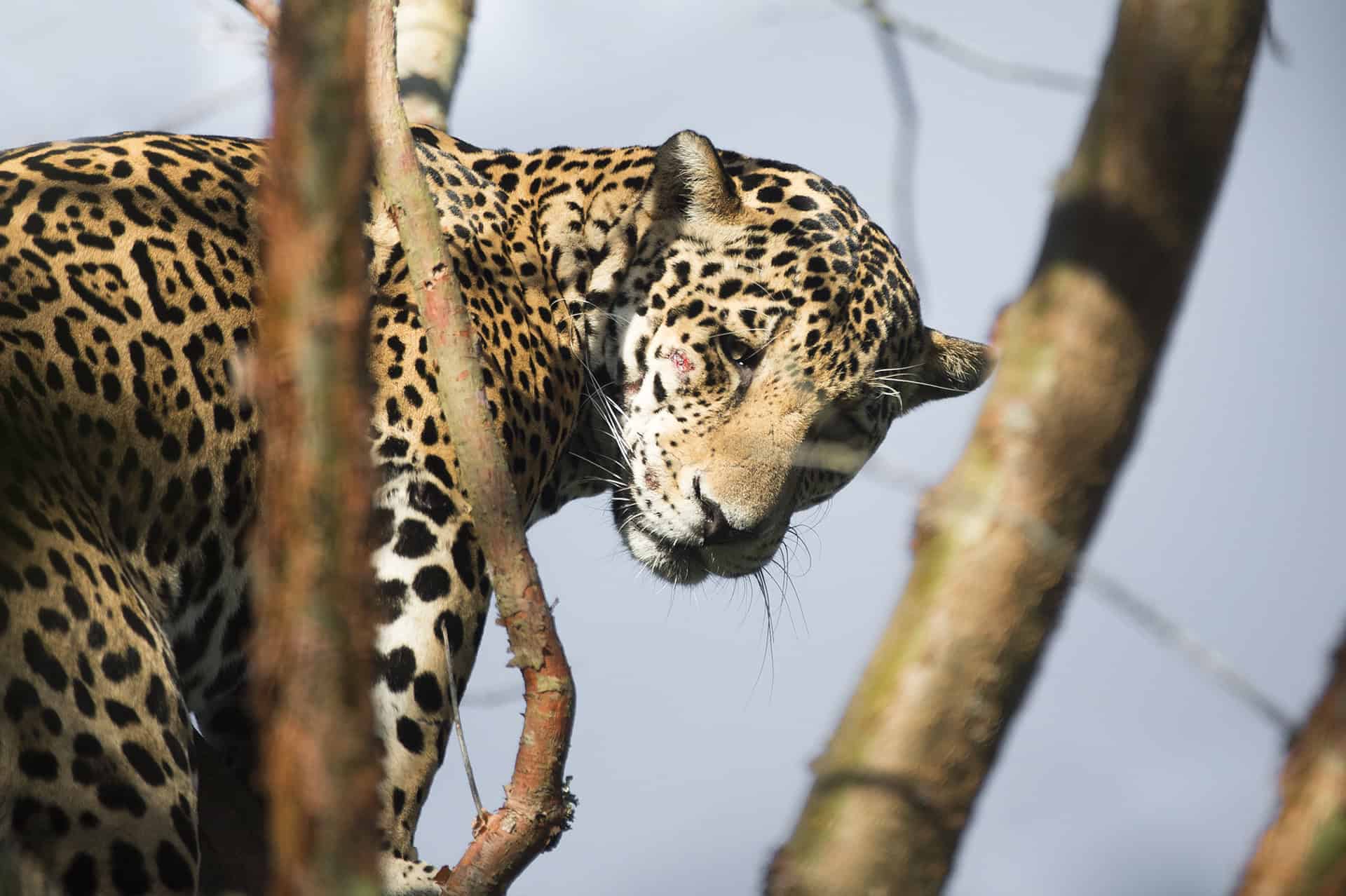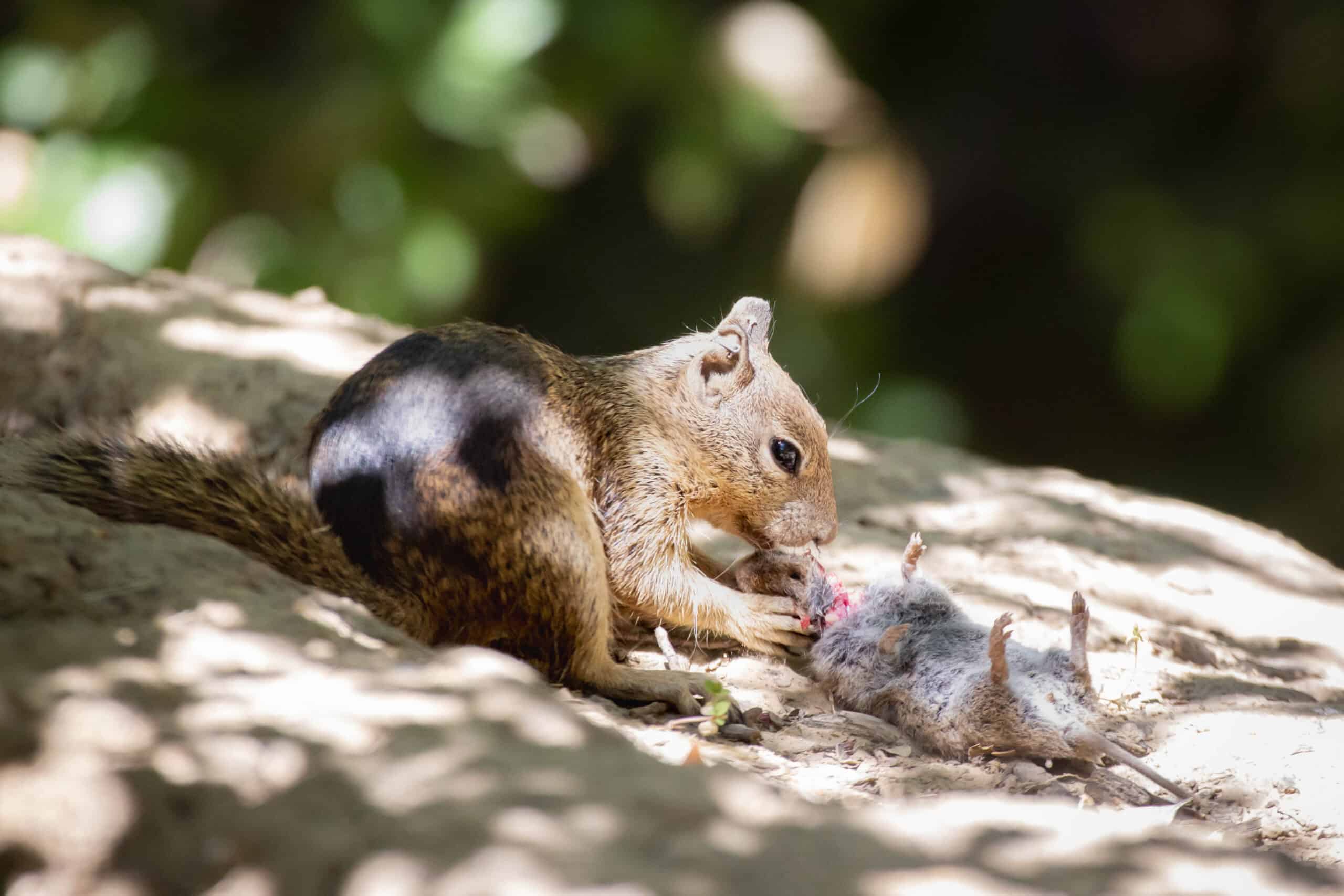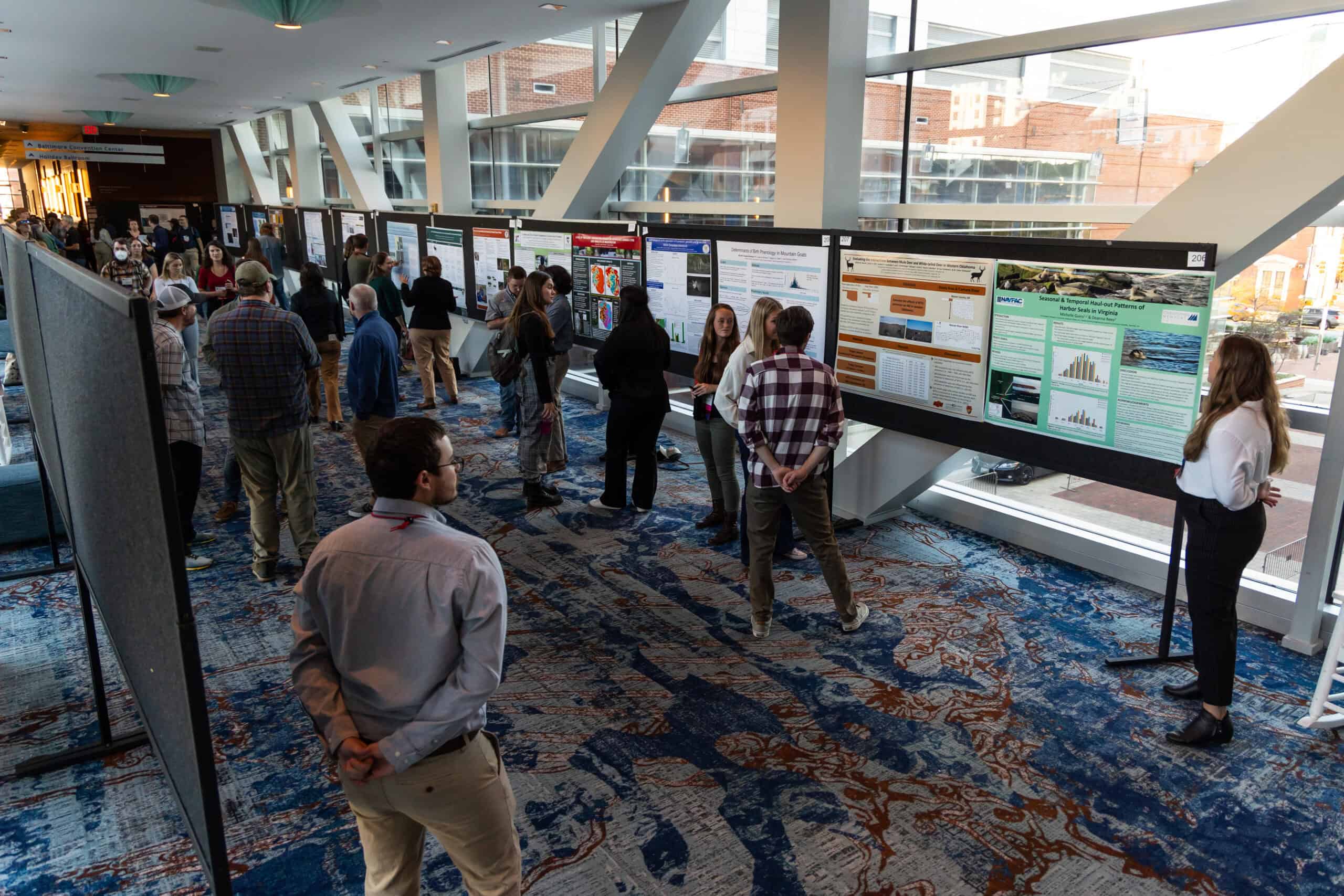Share this article
TWS grants bring more native students to Annual Conference
Seventeen aspiring wildlifers representing tribes from across the continent traveled to this year’s Annual Conference in Albuquerque, New Mexico, through TWS’ Native Student Professional Development program.
Organized by the Native People’s Wildlife Management Working Group, the NSPD program aims to remedy the wildlife profession’s lack of cultural diversity and support indigenous youth entering the field.
“It provides them a sense of belonging, feeling like they have a place, and they’re valued here at TWS,” said NSPD program coordinator Serra Hoagland. “They’re here with a group of other students from across the country that have similar goals and passions, and they’re able to share that with each other. It helps bring them up together.”
Since 2006, more than 100 Native American, Native Hawaiian and First Nations students focused on wildlife at the high school, undergraduate or graduate level have received travel grants to attend the Annual Conference as part of the NSPD program. They follow a dedicated schedule to engage in career development sessions, obtain advice from mentors, deliver personal presentations to Council on wildlife and culture, sit in on the working group meeting, share research projects, learn from talks and network with hundreds of peers and professionals.
“We try to cater what the conference already offers to members to this particular population of native students and ensure they’re getting the most out of the agenda,” said Hoagland, who joined TWS after participating in the NSPD program in 2010. “The program is helping them move along in their careers.”
At this conference, a participant in the first NSPD program spoke to the students about “coming full circle,” Hoagland said. Since then, increased funding has allowed the program to grow from a minimum of six to 18 students in one cohort. The 2017 NSPD was sponsored by the U.S. Department of Agriculture National Wildlife Research Center, Sundance Consulting, TWS’ North Carolina Chapter, the U.S. Forest Service Rocky Mountain Research Station, the U.S. Fish and Wildlife Service and the Forest Service.
“We’re able to offer this opportunity to a higher number of students to provide them with a community here at TWS,” Hoagland said, noting that one of the biggest challenges native students face is a lack of indigenous faculty who could serve as role models.
“Being part of this group, I can let first-time students know how the conference is and bring my experiences from the first time,” said Harlan Tso, a Navajo student from Arizona who was at the Annual Conference for a second consecutive year and serves as president of the Northern Arizona University TWS student chapter. “Now that I’m comfortable, I can talk to people and bring those for whom it’s their first year into the conversation.”
For Tso, the major highlights of this year’s program was the field trip the NSPD program participants took to the Santa Ana Pueblo, neighboring Albuquerque to the north, to see firsthand how the reservation was implementing management plans the students had learned about through lectures beforehand.
“That opened my mind,” said Tso, who hopes to become a TWS officer and further his work with the working group.
“I want to bring my voice into the working group and try to make it to where there’s more involvement with students,” he said. “It’s difficult to get to the meeting and put yourself out there.”
Raised in New Mexico’s Kewa Pueblo, Victoria Atencio, who’s pursuing a master’s degree in natural resource stewardship at Colorado State University, has attended annual conferences since 2015. This year’s, with an emphasis on cultural crossroads and taking place in New Mexico, “hit a lot closer to home,” she said.
“Talking to professionals who spoke for the symposium about native communities and diversity in the profession was interesting because I work with tribal governments,” she said. “Being able to provide that perspective of what we share with the landscape as native people to other professionals, I see it open doors for native people and people who want to work with tribes.”
Western science lacks that cultural perspective, Atencio said.
“It’s about being one with environment,” she said. “Just like we have our own thoughts and feelings, so do plants and animals.”
Atencio found it empowering to represent and observe indigenous diversity in the wildlife field through the working group, “to meet people from different reservations, see how we share the same problems and talk about how we could find solutions.”
Until Native Hawaiian Aaron Pila got to Albuquerque for his first Annual Conference, he wasn’t sure he wanted to choose the wildlife path over botany.
“It’s been life-changing,” said Pila, a junior at Hawaii’s Leeward Community College, where he found few chances to network and collaborate with other indigenous students committed to wildlife. “This program gave the opportunity to create those bonds and receive mentorship, which is huge in tribal communities.”
Forming those connections was his “wakeup call” to a career in wildlife, Pila said.
“Almost considering a different field, I felt alone in the journey,” he said. “Being around these people is inspiring. Everyone needs that in their journey, especially this one, saving the planet, the ultimate provider.”
Pila’s biggest takeaway from the conference was the need for cross-cultural cooperative research and action.
“We all are in that big fight,” he said. “Through unity, we can make change.”
Pila plans to return to the annual conference in Cleveland, Ohio, with another year of wildlife experience under his belt so he can build on the conversations he had this time with professionals.
“We need to bring more indigenous people out here,” he said, “more native Hawaiians and Pacific Islanders.”
Beside covering registration fees, lodging, meals and transportation for the conference, the program also makes participants members of the working group and awards them a one-year TWS membership. Applicants, who need not have any previous experience with TWS, can find the application on the society’s website.
“I want the annual conference to reach the highest number of students,” Hoagland said, “more opportunities for students to work together in the future, meeting again or staying in touch through social media. Follow-up helps students feel that when they go home, they still have somebody rooting for them and wanting them to succeed.”
2016 Native Student Professional Development Program participants
Ashley Archer
Sault Ste. Marie Tribe of Chippewa Indians
Michigan State University
Victoria Atencio
Kewa Pueblo
Colorado State University
Bryan Begay
Navajo
Norther Arizona University
Daniel Bird
Santo Domingo Pueblo
Purdue University
Kelda Britton
Wailaki/Nomlaki/Concow
Humboldt State University
Caitlin Ferry
Metis
University of Winnipeg
Danielle Freemont
Northern Cheyenne
University of Montana
Celina Gray
Blackfeet and Little Shell Chippewa
Salish Kootenai College
Mateen Hessami
Wyandotte Nation
University of Montana
Xavier Lovato
Cochiti/Kewa Pueblo
New Mexico State University
Aaron Pila
Hawaiian
Leeward Community College
Michelle Quillin
Hughes Village
University of Alaska Fairbanks
Joseph Reustle
Oglala/Lakota
Texas A&M University – Corpus Christi
Jessica Rich
Eskimo
Michigan Technological University
Nerisa Taua
Samoan
Chaminade University of Honolulu
Harlan Tso
Navajo
Northern Arizona University
Ty Werdel
Sisseton-Wahpeton Oyate
South Dakota State University
Header Image: The 2017 Native Student Professional Development program cohort poses with coordinator Serra Hoagland (back right) in Albuquerque, New Mexico.








